Sourdough bread is not only a delicious dish but also the result of a delicate and meticulous handmade process. With its characteristic mildly sour flavor and soft chewy texture, Sourdough bread has captured the hearts of bread lovers around the world. Not only attractive in taste, Sourdough also stands out with its significant nutritional benefits. In this article, we’ll explore from start to finish the nutritional value, ingredients, how to make sourdough bread with starter in a Dutch oven, frequently asked questions, and some helpful tips to help you. success from the first time.
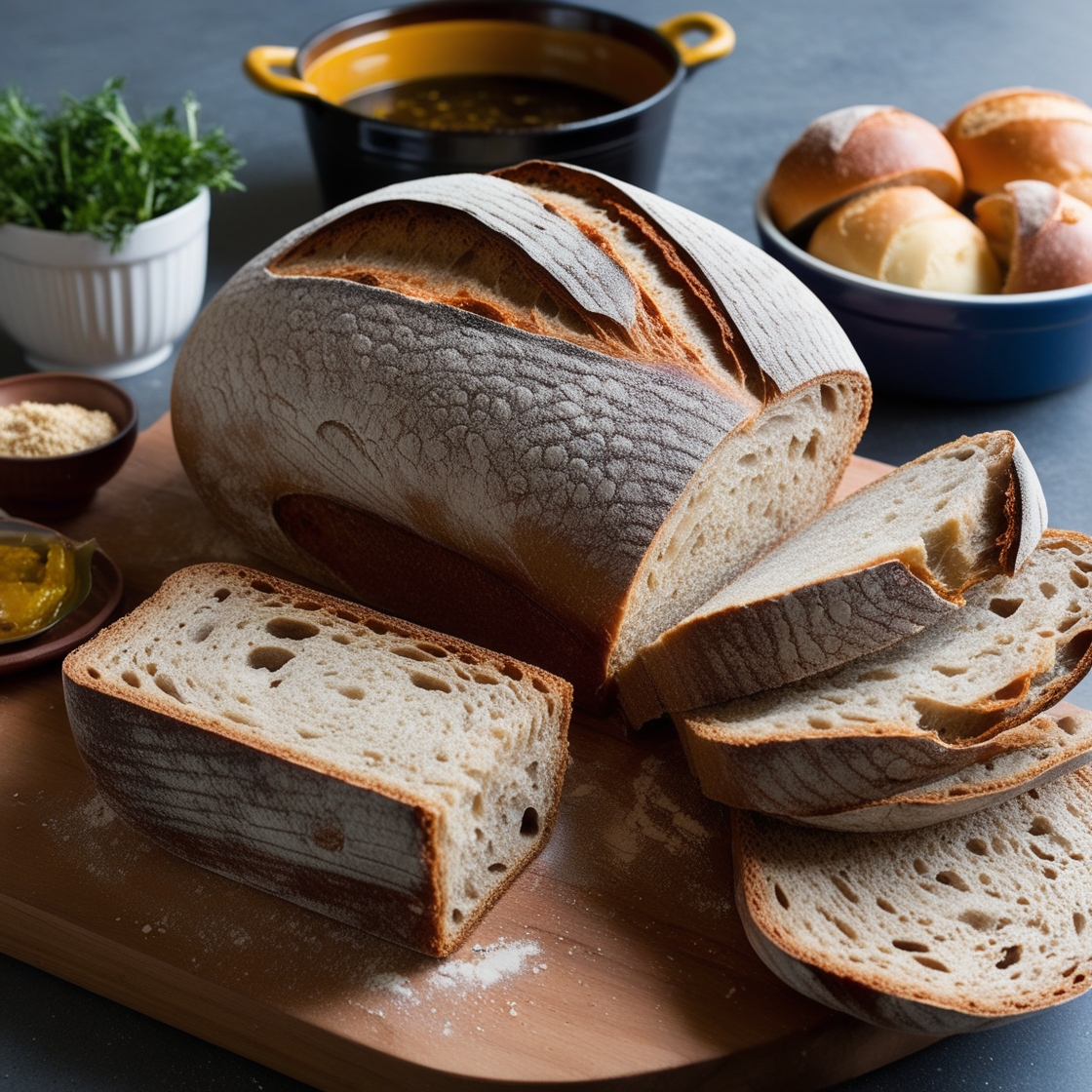
Nutritional value:
Sourdough bread has many superior nutritional benefits compared to regular bread. The slow fermentation process not only helps break down gluten but also increases the absorption of minerals and vitamins in the cake. Some outstanding nutritional benefits of Sourdough include:
- Aids digestion: The natural fermentation process helps break down gluten and other indigestible substances, making bread easier to digest.
- Rich in probiotics: Sourdough bread contains beneficial bacteria, which helps improve intestinal microflora and enhance digestive health.
- High mineral content: Sourdough bread is rich in iron, zinc, magnesium and other essential minerals, which help promote overall health.
- Reduced glycemic index: Sourdough bread has a lower glycemic index than bread made from industrial yeast, helping to control blood sugar better.
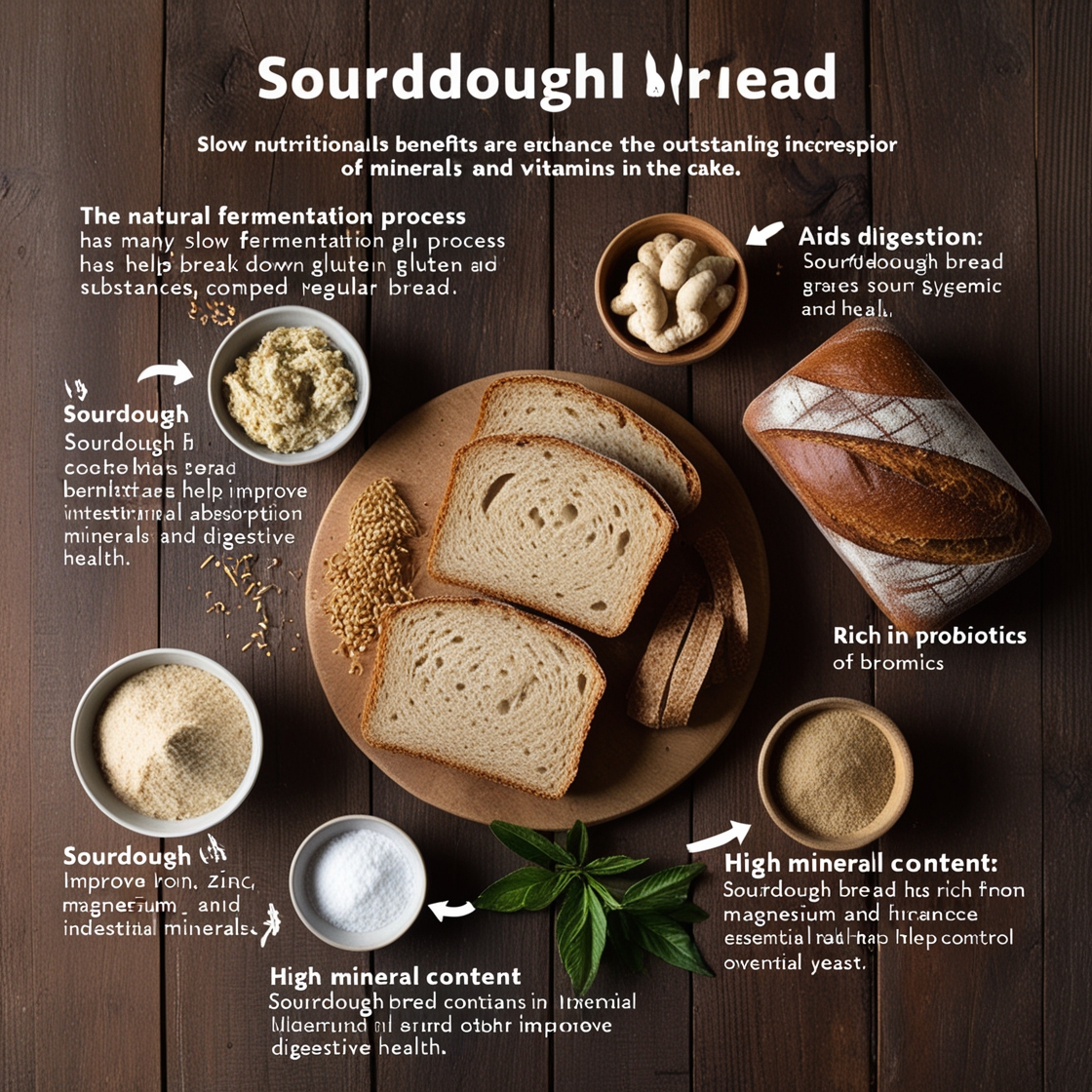
Ingredient:
To make Sourdough bread, you need to prepare the following ingredients:
- 500g all-purpose flour (or whole wheat flour if you want a richer flavor)
- 300g filtered water
- 100g Sourdough starter (previously prepared)
- 10g sea salt
- Dutch oven for baking cakes
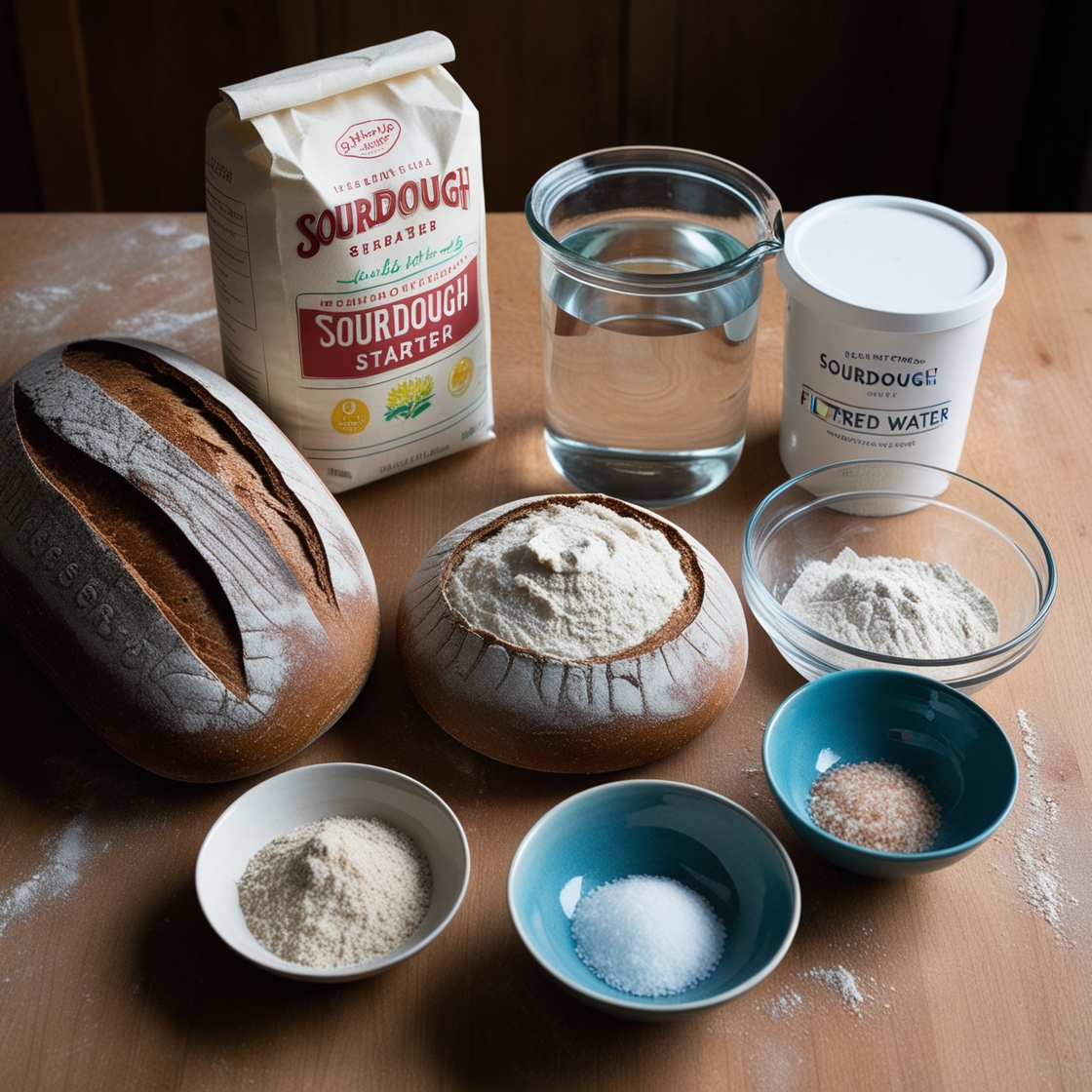
Making:
Step 1: Prepare Starter:
- If you don’t have a starter, you can make your own by mixing water and flour in a 1:1 ratio every day for about 5-7 days. Each day, you should remove a portion of the mixture and add equal amounts of flour and water. When the starter begins to foam and smell slightly sour, it is ready to use.
Step 2: Mix the dough:
- In a large bowl, mix 500g flour with 300g water. Use your hands or a wooden spoon to stir until all the flour is wet. Cover the bowl and let the mixture rest for 30 minutes so the dough is fully hydrated.
Step 3: Add Starter and salt:
- After the dough has rested, add 100g Sourdough starter and 10g salt. Knead the dough until all the ingredients are evenly combined and the dough becomes smooth and elastic.
Step 4: First fermentation:
- Place dough in a large bowl, cover and leave at room temperature for about 4-6 hours. During this process, you should fold the dough every 30-60 minutes to enhance the texture of the cake. To do this, you pull up a portion of the dough from the edge and fold it to the center, rotate the bowl and repeat until you have folded the entire dough.
Step 5: Shaping and second fermentation:
- Once the dough has doubled in size, gently place it on a lightly floured work surface. Shape the cake as desired and place in a woven basket or bowl covered with flour cloth. Cover and let the dough rest for another 1-2 hours.
Step 6: Baking:
- About 30 minutes before baking, preheat the Dutch oven to 250°C. When the oven is hot enough, gently transfer the cake into the oven, cover and bake for 20 minutes. Then, open the lid and bake for another 20-25 minutes until the cake is golden brown and the crust is crispy.
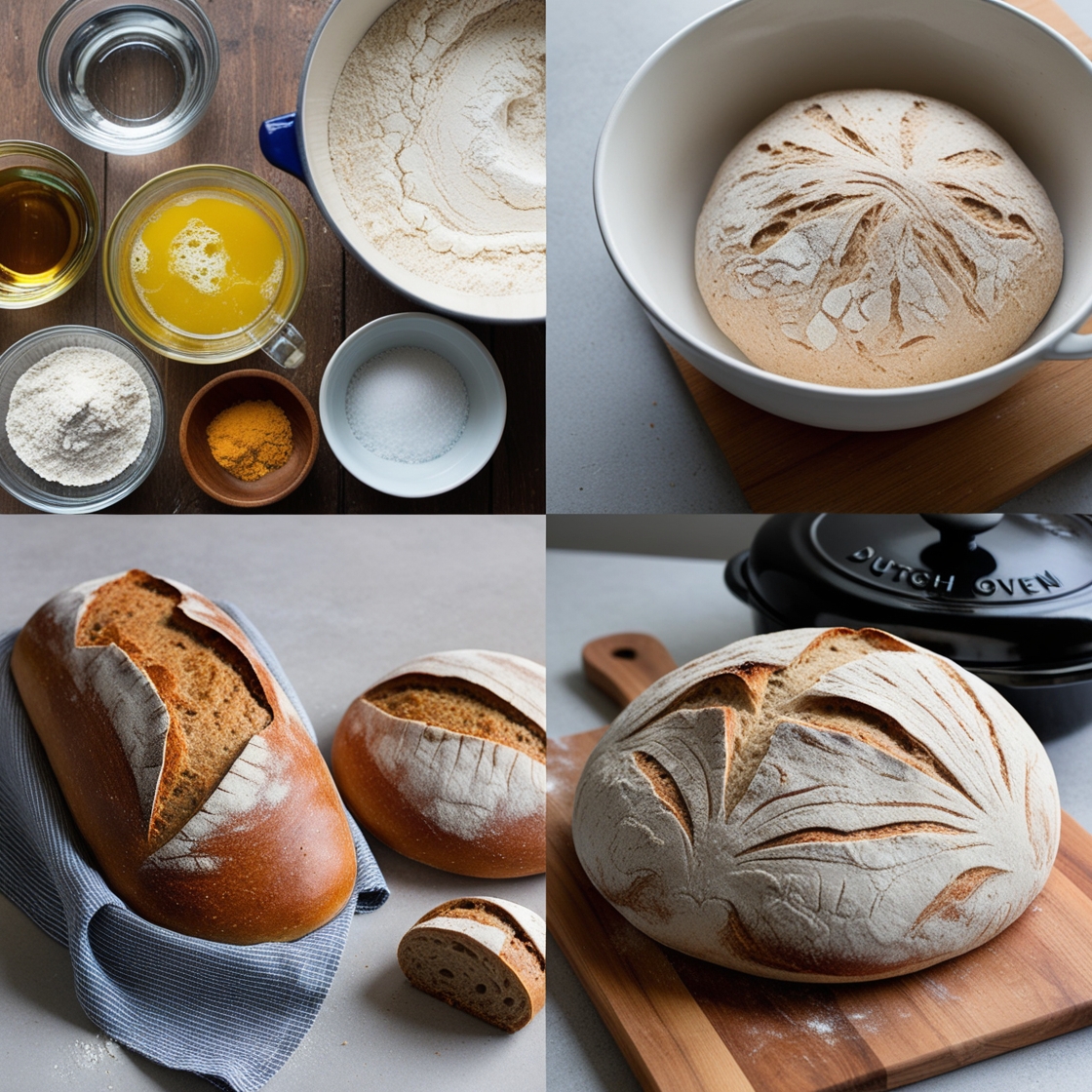
Frequently asked Questions:
1. Why doesn’t my bread rise enough?
- The cause may be that the starter is not strong enough or the fermentation time is not enough. Make sure your starter is working properly and check the fermentation process again.
2. Can I use another type of flour?
- Yes, you can try using whole wheat flour or rye flour to give your bread a different flavor and texture.
3. How to preserve starter?
- You can store the starter in the refrigerator and “feed” it (adding flour and water) once a week to keep it active.
Tips:
- Use filtered water or cooled boiled water to avoid chlorine in tap water affecting the fermentation process of the starter.
- Make sure the Dutch oven is evenly heated before placing the cake in for the best rise.
- Patience is the key. The slow fermentation process gives the cake a richer flavor and better texture.
- Don’t be afraid to experiment with different flours or add ingredients like chia seeds and flaxseeds to create your own unique Sourdough bread.
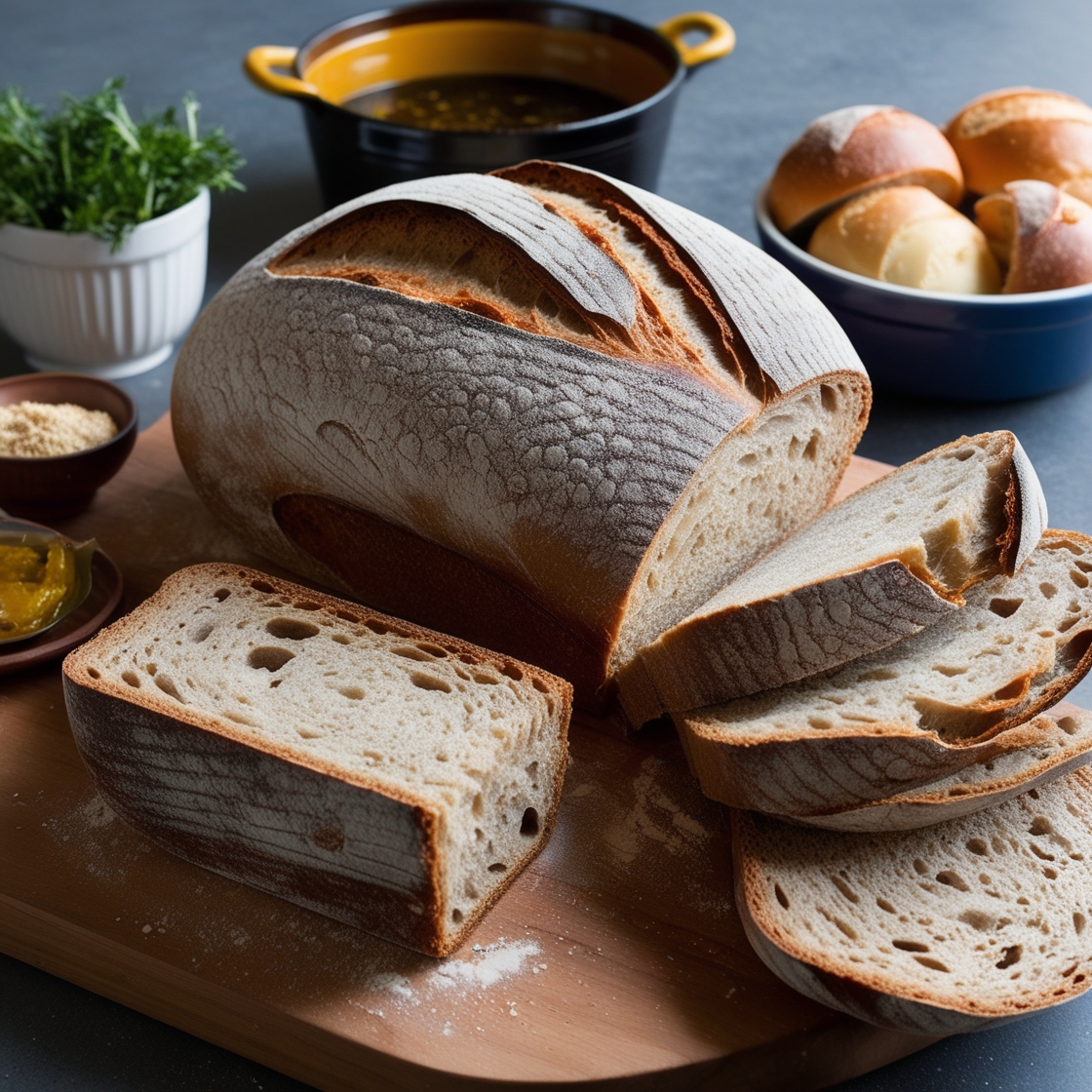
Sourdough bread is not only a delicious dish but also an exciting journey from making the starter to crispy golden brown in the Dutch oven. With its high nutritional values, unique flavor and health benefits, Sourdough bread deserves to be tested and enjoyed. Start your baking journey and enjoy each delicious slice with your family and friends.
Hopefully this article has provided you with all the necessary information and inspiration to start making Sourdough bread at home. Wishing you success and great experiences with this special bread.
